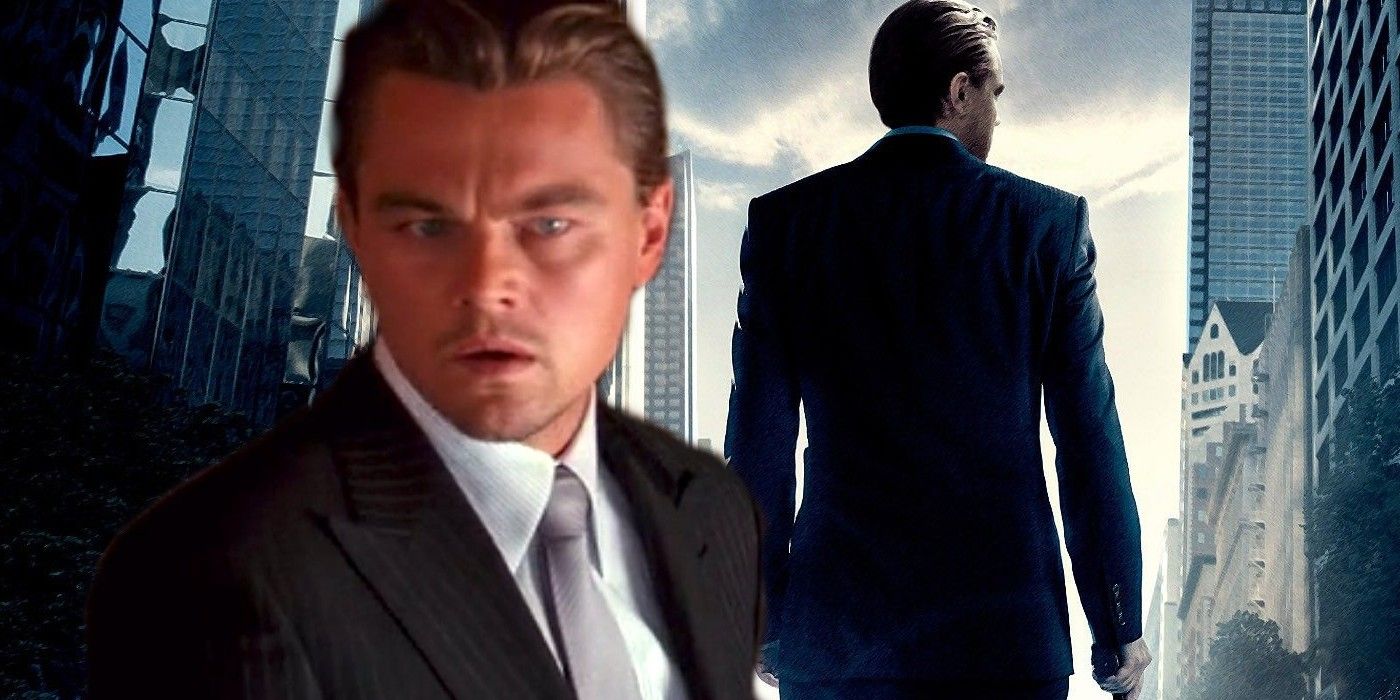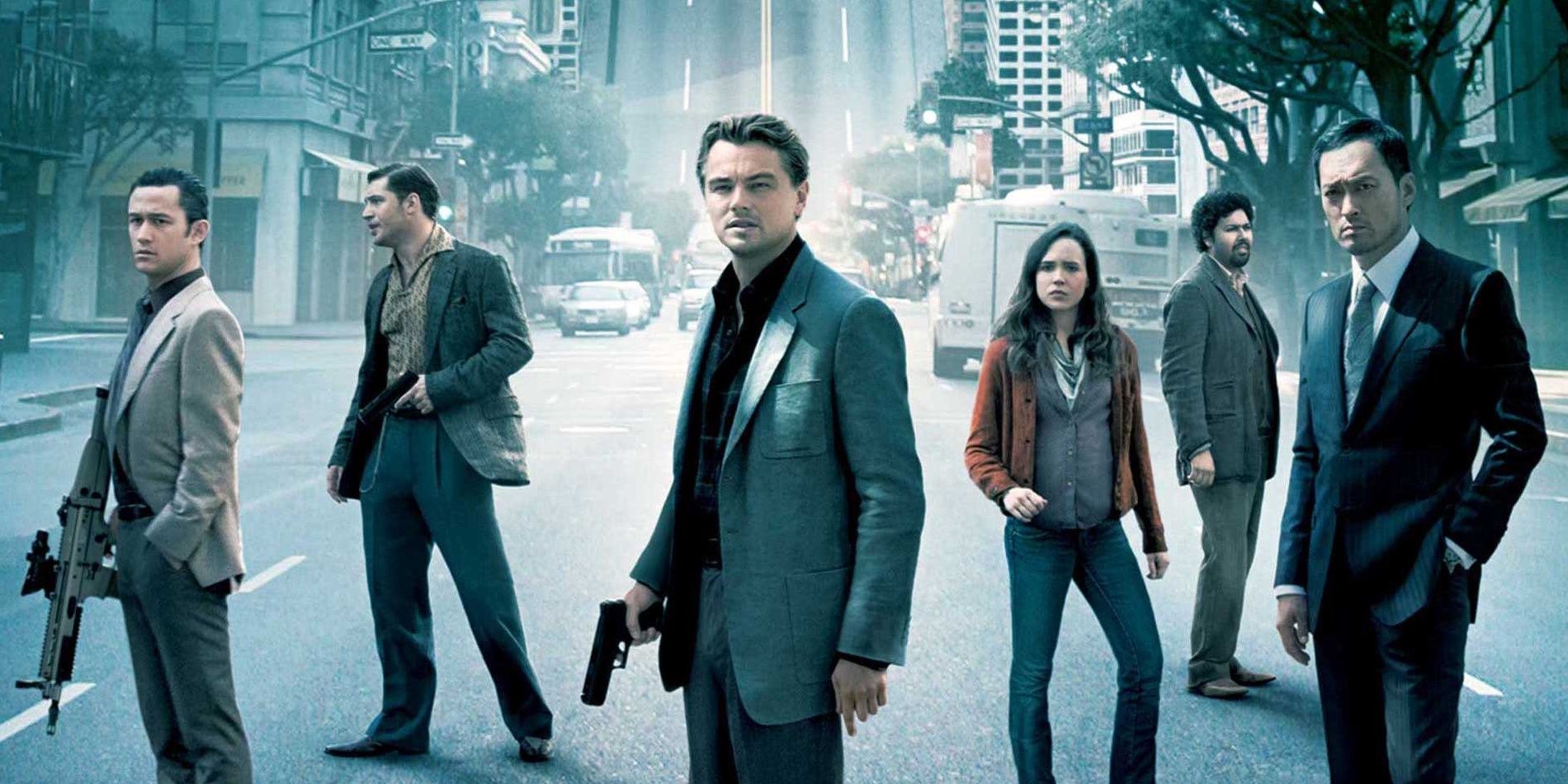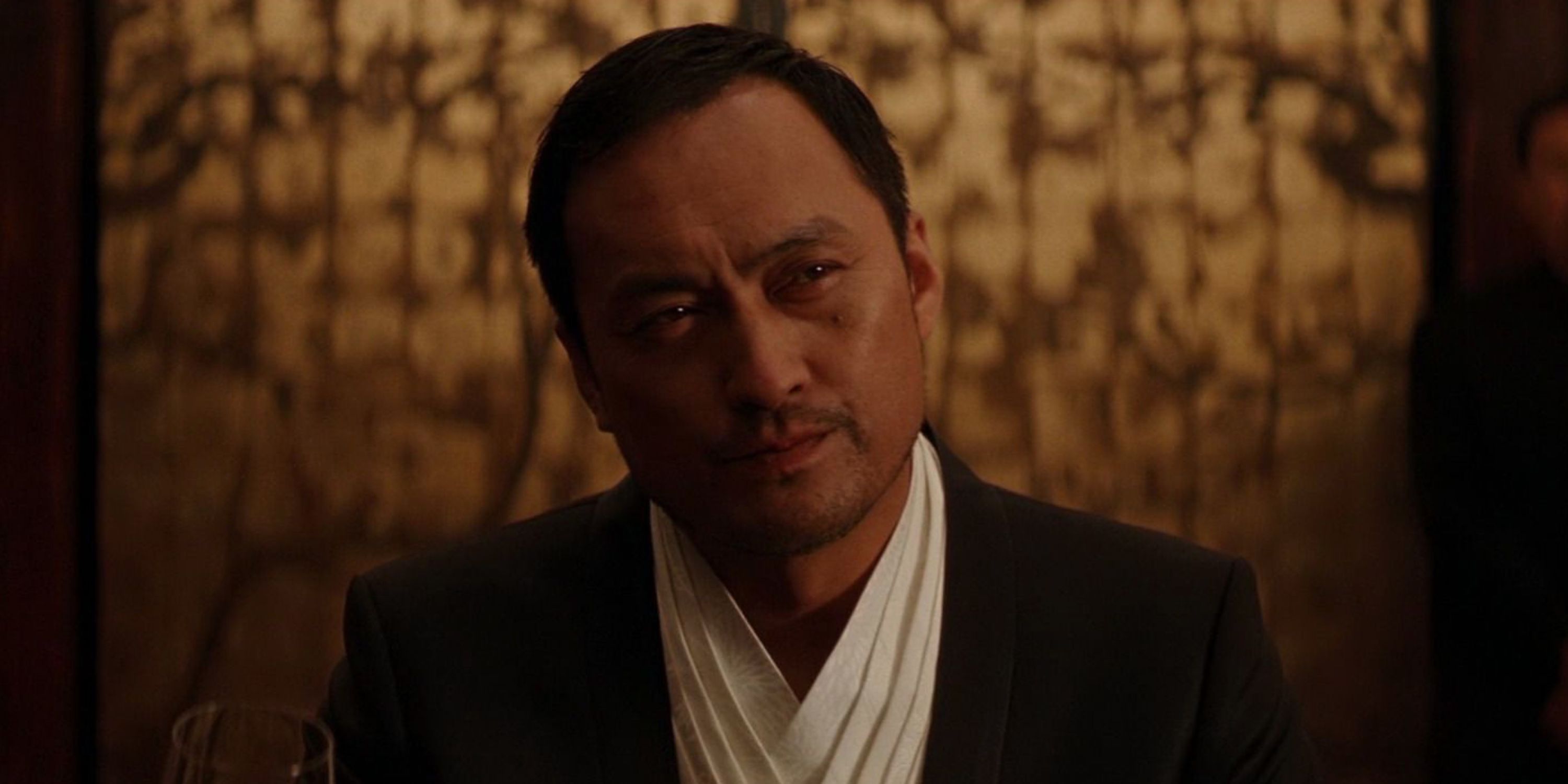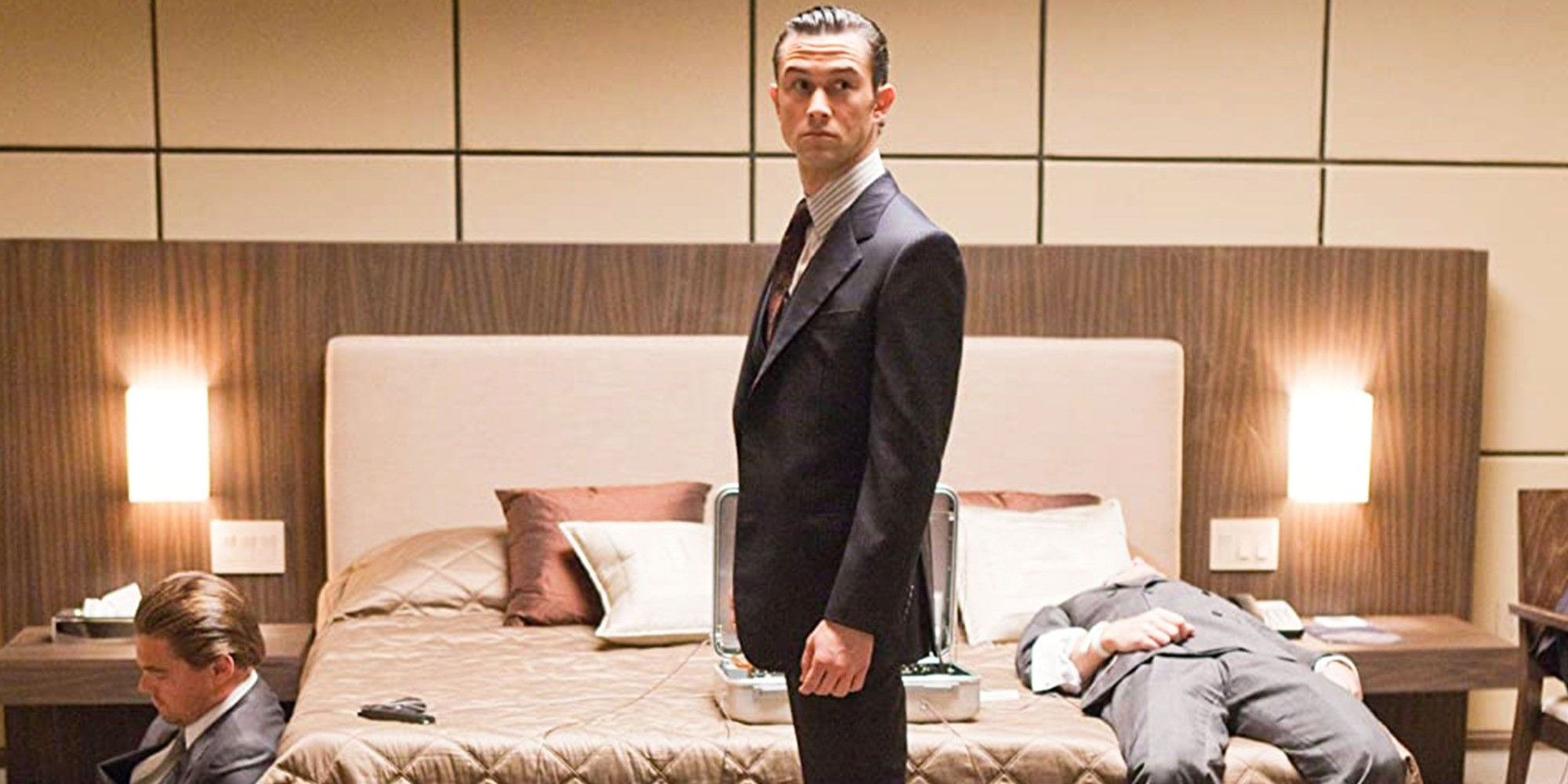How realistic is Inception's depiction of using shared dreaming to manipulate another person's thoughts? In true Christopher Nolan tradition, Inception doesn't take a huge technological leap into the future, choosing to remain grounded in some semblance of recognizable contemporary reality. Fans of flying cars and laser guns should look elsewhere. Instead, Inception's science fiction elements are strictly limited to whatever's needed to facilitate the plot; in this case, the ability to share dreams.
Within Inception's mythology, the U.S. military conceived a way of training soldiers in realistic combat scenarios without physically being present. Through the drug Somnacin and the PASIV devices kept in steel suitcases, soldiers entered a shared dream and shot each other without fear of repercussion or consequence. Some time later, this same technology found its way into the private market, allowing the likes of Cobb, Eames and Arthur to carve out illicit careers as professional brain thieves. Leonardo DiCaprio's Dom Cobb would lull his target into a position where shared dreaming was possible, enter the subject's mind, and then swipe whatever piece of information he was being paid to retrieve. Upon meeting Mr. Saito in Inception, Cobb reveals he can implant ideas in the subject's mind as well as steal them. This difficult practice is considerably riskier and requires layers upon layers of dreaming to achieve, but can be very effective when performed correctly.
While Inception's story has captured imaginations for over a decade now, current science appears no closer to letting mankind walk through the dreams of others. But how realistic are the concepts raised by Inception?
Shared Dreaming
Using a mixture of technology and drugs to create a dreamscape that more than one person can inhabit is one of the more outlandish aspects of Inception's plot. Currently, there is no way one person's dreams can be shared with someone else in real-time. One can only hazily recount their experience to someone upon waking and hoping they don't judge your subconscious exploits too harshly. Having said that, Inception isn't entirely without real-world comparison.
When on a job, Cobb and his cohorts can move freely through dreams, fully aware of their situation and the non-reality they're occupying. Proponents of lucid dreaming claim this to be perfectly possible. A lucid dream is essentially when the person recognizes they're dreaming, but is able to continue their adventure with this knowledge. Although research into the matter is ongoing, scientific studies suggest lucid dreams are inherently different to the usual kind, and while there's no way to share the experience with others (yet), more recent developments have inched eerily closer to Inception territory.
In a report published in February 2021 (available here), scientists claimed they were able to share a two-way conversation with a person in the midst of a lucid dream. The sleeper would hear audio cues from the lab, and then responding with specific eye movements, even solving simple math sums. This echoes how Cobb's team use musical cues to signal incoming wake-up kicks in Inception. Interestingly, experiments of this ilk have disproved Inception's idea of time dilation in lucid dreams. Although it often seems like time passes faster in dreams, lucid dreamers have shown an ability to keep count in time with the real world.
Edging even closer into Christopher Nolan's fictional world, 2018 studies were carried out with on-the-market drugs said to induce lucid dreaming as a side effect. Although the results aren't conclusive, there is some indication that a drug could be used to increase the chances of experiencing a lucid dream, while various other products that allege to induce a lucid dream are also available. Expect Somnacin to hit a pharmacy near you soon!
Layered dreaming is another part of Inception's lore with a close, albeit somewhat less exciting, real life cousin . Inception plays heavily on the "dream within a dream" idea, which is closely tied to the phenomenon of "false awakening." In Inception, Cobb's team would lay themselves down to sleep while already within a dream to reach the next layer. Outside of the movie, it's more common for the reverse to occur - a dreamer believes they've awoken, but are actually still inside a dream. Rather than the tier-style structure seen in Inception, however, this can more accurately be described as one single, lasting dream.
The ominous layer of Limbo is one of Inception's more unlikely assertions. According to Cobb, an unwary dreamer can lose all sense of reality in Limbo, with their mind refusing to awaken back to the outside world. Some lucid dreamers have reported wanting to wake up but being unable, and sleep paralysis is a condition where sleep states overlap, resulting in an unsettling mix of consciousness and dreaming, but neither accurately represents Inception's Limbo prison. There is uncertainty over whether coma patients can dream (via BBC Science Focus), but in these instances, it's the physical injury keeping the person from waking, not a lost grasp of reality - entirely the opposite to Inception.
Thought Stealing
Inception sets the imagination racing for anyone who's ever wished they could read their crush's mind, or find out their boss' secret password, but (thankfully) those folks are firmly out of luck. Cobb makes a living by stealing secrets from the subconscious, but this is much harder in reality than Leonardo DiCaprio makes it look.
The closest real-world comparison to Cobb's line of work would be the dubious practice of hypnotism. Instead of mentally infiltrating a person's subconscious, a hypnotist claims to lull their subject in a subconscious state, whereby they become more open to suggestion - quacking like a duck, and all the other embarrassing stereotypical hilarity. Naturally, some have questioned whether hypnotism could be used to draw out a person's innermost secrets, but while hypnotism isn't an exact science (if, indeed, a science at all), it's generally accepted that this cannot happen. Despite what stage hypnotists and Hollywood might have you believe, those being lulled into a hypnotic state retain control, and won't be found spilling their darkest thoughts.
Those wanting to emulate Cobb will simply have to hope their target shouts out loudly in their sleep... but perhaps not forever. As brain imagining technology continues to improve, scans can currently tell which cortex is active during sleep (via Forbes), offering some clues as to what the subject might be dreaming about. Several decades into the future, it's not inconceivable that this tech could become more accurate in revealing the contents of a person's dream.
Inception
According to the rules of Inception, taking something from the human mind is much easier than planting it there. Cobb and Arthur are renowned for their ability to steal secrets from a dreamer's subconscious, but the act of inception has only been attempted a handful of times - twice that the audience learns of. Ironically, the reverse is true in reality - suggesting an idea to the human mind is far simpler than forcibly taking one from it.
Inception happens every day when the mind subconsciously and automatically absorbs visual and auditory information. Advertisers take advantage of this by using subliminal messaging to ingrain their product into the consumer's mind, with even small details such as color, font and wording designed to send a specific message that the viewer won't necessarily be aware of, but will still compel them to try that energy drink, or question whether they really do have the best value broadband deal.
The power of suggestion is a key weapon in the arsenal of British performer Derren Brown, who utilizes a combination of suggestion and psychology for his ambitious stunts. In The Push, for example, a PR event is entirely orchestrated around compelling an ordinary member of the public shove a man to his death, and while not all succumb to the intense suggestion, some do. In another stunt, Brown used subliminal imaging on a group of advertising executives, getting them to come up with an idea eerily similar to one he'd predicted previously. Although Inception might assert the opposite, the brain is far easier to trick into action than into revealing closely guarded secrets.
But could Cobb use subliminal suggestion to convince Fischer to liquidate his father's corporate empire? Probably not. Various studies into the advertising strategies in a practical context (via APS) demonstrate that while the technique does work, the effects are usually short-lived and limited in scope. In other words, you've already got to want a drink before being subliminally influenced to choose a specific brand. The human race is still some way off subtly manipulating business rivals to submit their assets à la Inception.





